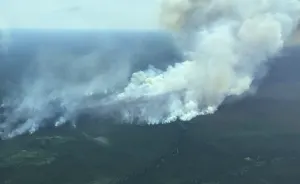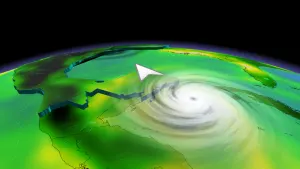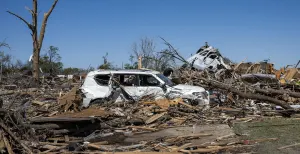
Prince Albert sounds alarm on wildfire season, urges early mitigation measures
The Prince Albert Grand Council (PAGC) is sounding the alarm on the upcoming wildfire season, urging Saskatchewan to take preventative measures, as the province continues to experience extremely dry winter conditions.
After a particularly rough 2023 wildfire season, the grand council said it will begin fire mitigation efforts as soon as possible this year. Wildfire mitigation can include prescribed burning, forest thinning, pruning and mechanical removal of vegetation.
In a statement on Tuesday, PAGC Grand Chief Brian Hardlotte called for increased vigilance and proactive strategies to protect First Nations in northern parts of the province. He said these communities not only face evacuation threats, but also rely heavily on the land for their way of life.
"The prospect of a warmer wildfire season coupled with diminished snowfall underscores the necessity for preventive action to ensure the well-being of our communities. The protection of our territories and our people is paramount, and we cannot afford to be reactive," said Hardlotte, who also chairs the PAGC wildfire task force.

Brian Hardlotte, Grand Chief of the Prince Albert Grand Council, is calling for increased vigilance and proactive strategies to protect First Nations from wildfires in northern Saskatchewan. (Bryan Eneas/CBC)
The task force recently met to deliberate on the wildfire threats that are anticipated for the upcoming season. It said there is critical risk posed by this year's reduced snowfall. The Canadian Forest Service also warns that there is a high wildfire alert for 2024.
Cliff Buettner, director of forestry for the PAGC, said the council is prepared to take wildfire mitigation action earlier than usual this year, if necessary.
"The intent is to limit the amount of evacuations that we have. If we have people that are willing and able and capable and qualified in those communities, why would we not utilize that resource to protect the community?" Buettner said.
The council has a First Nation forest fire protection services contract with the provincial government that runs from 2022 to 2027. It funds 23 five-person wildfire crews across the PAGC area. PAGC protection services also receives fire suppressing equipment and resources from Indigenous Services Canada.
SEE ALSO: How history was made: Canada just soared passed 21 C in January
Buettner said Saskatchewan's wildfire season typically begins on April 1, but adds there is a possibility that it could get an early start this year due to dry conditions.
"If the Saskatchewan Public Safety Agency chooses to start earlier and reflect that on any agreements that we have, we would definitely support it ... we would be fire ready," Buettner said.
The agency said in a statement that it has pledged to work closely with the PAGC.
"We're aiming to reinforce our defences and encourage community-led initiatives in wildfire management and prevention. Working with PAGC is crucial. Together, we will strengthen our defences against the wildfire threat," said Steve Roberts, vice president of operations for the Saskatchewan Public Safety Agency.
Drought and soil conditions
Next door, Alberta has hinted that it may have to declare an emergency due to severe drought. John Pomeroy, Canada Research chair in water resources and climate change, said that while the majority of Saskatchewan has drought conditions, the situation isn't as worrisome as Alberta's — at least not yet.
"Saskatchewan has Lake Diefenbaker, which is a much larger reservoir than anything Alberta has. And so Lake Diefenbaker can manage through more than one year [of] drought. Of course, how long depends on the severity of the drought," Pomeroy said.
It has been an incredibly dry winter, with less snowfall than usual, according to Agriculture and Agri-Food Canada. Pomeroy said some soil has been capped with ice layers, which will restrict further entry of snow, melt water or rainwater. This is a problem because the soil needs as much moisture as possible leading up to wildfire season.

John Pomeroy is a Canada Research chair in water resources and climate change. He says the drought should be a wake-up call for those in the agriculture industry in Saskatchewan. (Paula Duhatschek/CBC)
But the mild winter has also meant that not all the soil is capped with ice.
"[That soil] can still benefit from further snow, which is certain to occur this winter. And the stubble is now empty and can trap more snow on the ground," said Pomeroy.
"So, strangely, there's a bit of an advantage when the snow melts in midwinter in that we can now trap more snow with the stubble exposed above the ground and that could be beneficial to improving moisture status in the fields."
Pomeroy said Saskatchewan's drought is a wake-up call for those in agriculture.
"We need to make sure when we irrigate — particularly if we look at expanding irrigation — that we're doing so with the most up-to-date machinery so that it's efficient."
This article, written by Laura Sciarpelletti, was originally published for CBC News.
Thumbnail image courtesy: Besnard Lake Lodge









